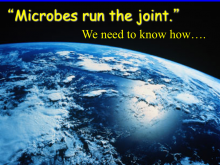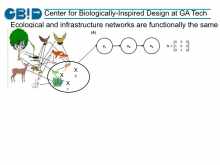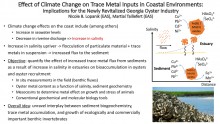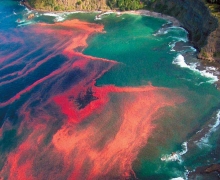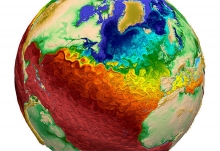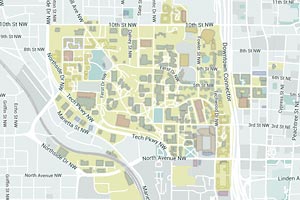Geochemical time series from remote Pacific atolls have provided long records of climate variability that extend into the pre-industrial era. Recent studies document a wide range of geochemical variability in corals growing on the same reef, ostensibly of the same genus. Deciphering which fraction of coral geochemistry variations are driven by changes in physical environment versus physiological differences between corals is key to constructing more robust records of past climate variability.
This study seeks to develop a location independent scalable framework for Community based Sustainable Coastal Area Resilience Planning (C-SCARP).
The data-driven framework is adaptable to other locations and/or scales in the future. The proposed C-SCARP framework will make use of an adapted and expanded version of the GoldSET suite of decision support tools that incorporates multi-criteria analysis in a sustainability evaluation framework. Three distinct uses of GoldSET are anticipated:
Seaweeds create toxic compounds to deter consumers (fish) and poison competitors (corals). However specific fishes resist these toxins, and some corals also are resistant to their effects. These tolerances may be due to unusual microbes in the gut microbiomes of fishes and in coral mucus coverings. GT has an unusual mixture of marine ecologists, chemists and microbiologists to address these issues.
Creating sustainable and resilient cities depends on understanding the properties of food, energy, water and other infrastructure networks. Ecological network analysis ENA is a tool that can be used to understand the connections between network structure, material and energy flow, and resilience. ENA is increasingly applied to both understand and design more sustainable and resilient human infrastructure.
The urbanization of the coast is generating significant environmental issues, including increasing nutrient runoff that promotes eutrophication and hypoxic conditions in estuaries. At the same time, the excessive input of nutrients is also responsible for an increase acidification of coastal waters, as denitrification in sediments typically generates acidity.
The effects of climate change on the coastal ocean include a decrease in riverine inputs and increase in salinity in estuaries with impacts on primary production, macrofauna, and sediment biogeochemistry that are poorly understood. One clear effect of the increase in salinity associated with the decrease in riverine discharge, however, is the enhanced coagulation of inorganic material further upriver. Flocculation of particulate material upriver will enhance its flux to the sediment and simultaneously decrease the outflux of particulate material to the continental shelf.
Single-celled marine algae are especially chemically rich, producing toxins that kill fish, marine mammals, and seabirds, contaminate shellfish, and threaten human health. Many predators of these algae – copepods – selectively consume less toxic algae, which in turn sense copepods via an excreted blend of copepod-specific molecules. These algae then become up to 20X more toxic when they sense copepod cues in the open ocean.
The recently completed resource assessment for ocean current energy (Haas et al. 2013) utilized fairly simplistic analytical methods to estimate the extractable energy from the Gulf Stream System as well as to analyze the relative impacts of large scale energy extraction. This level of analysis can be considered to be accurate to an order of magnitude and only provides an idea on the overall trends of the impacts of extraction. Much higher resolution modeling is required to accurately determine the overall impacts of extraction for both localized and far field effects.
The project aims at further testing a new approach, the maximum entropy production (MEP) model of surface heat fluxes (Wang et al, 2014), for modeling and monitoring air-sea exchange of water and heat air-sea water and heat.



